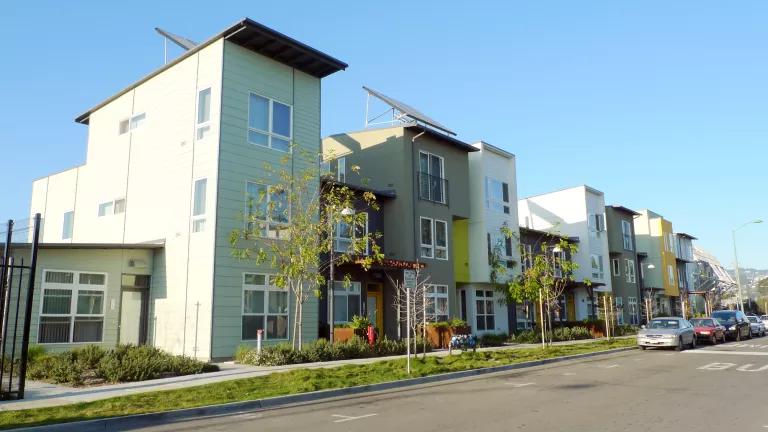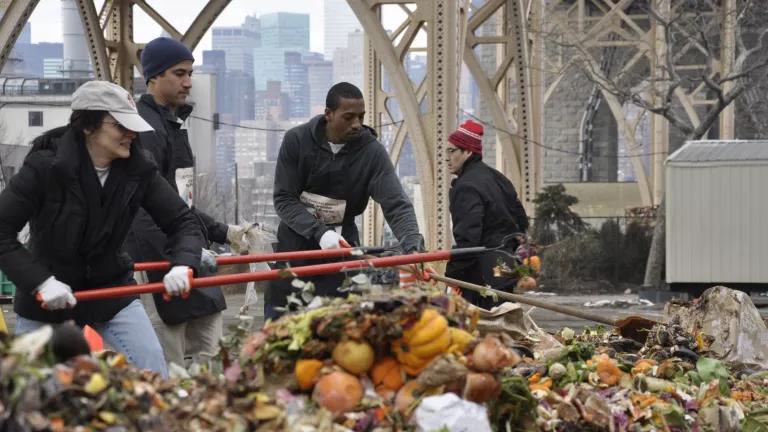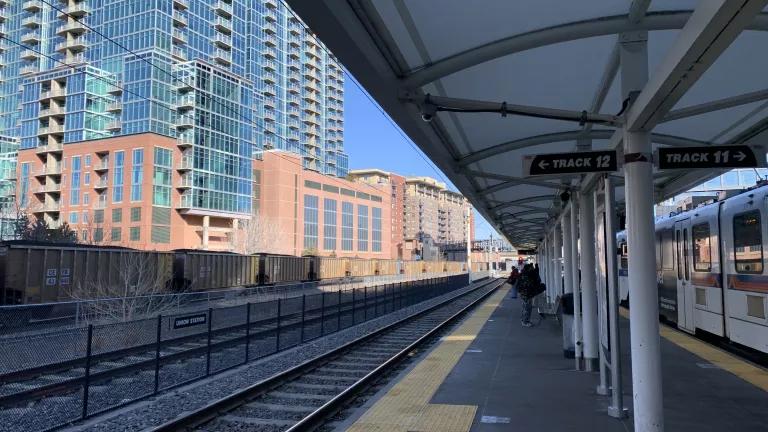SPARCC: Igniting Sustainable, Equitable Community Development
I anticipated that relief and joy would be my overriding emotions today in announcing the communities in which SPARCC—the Strong, Prosperous and Resilient Communities Challenge—will invest. But I find that what I feel most strongly is an overwhelming sense of urgency.

Homes in a LEED certified affordable community in Oakland, California
I anticipated that relief and joy would be my overriding emotions today in announcing the communities in which SPARCC—the Strong, Prosperous and Resilient Communities Challenge—will invest. But I find that what I feel most strongly is an overwhelming sense of urgency.
That’s what happens when you put years into a project that goes to your deepest commitment—helping to build and transform neighborhoods where all people can succeed regardless of ZIP code.
It’s also what happens when there is an apparent disconnect between what the American people say they want—decisive action to restrict carbon pollution and move to a prosperous, clean-energy economy—and what future federal policies may deliver. Local communities know that they are on the front lines of climate change, and they are working swiftly to mitigate its effects and help their communities prosper in doing so.
They are feeling the urgency, too, and they live in the places where the work is done.
The announcement that Atlanta, Chicago, Denver, Los Angeles, Memphis, and the San Francisco Bay Area will be the first recipients in SPARCC’s three-year, $90 million initiative comes at the end of a competitive application process that began last year. Each of the chosen SPARCC sites has been awarded $1 million in direct grant and technical assistance funds, and the sites overall will have access to an estimated pool of $70 million in financing capital, as well as $14 million in extra support for data systems, policy and communications.
The vision of SPARCC
Each site’s project is different but each is similar in its position within the SPARCC principles of using infrastructure investments to empower communities and local groups to ensure that projects to enhance the built environment—the physical representation of our cities and neighborhoods—foster thriving places of opportunity for all residents. That means creating access to transit, economical housing, resilient streets and building construction, clean air and water, and a healthy economic environment ripe for investment and opportunity that benefits local residents.
Here are the issues and SPARCC-funded visions:
- Atlanta’s public transportation system has contributed to a stark racial divide by limiting those living in low-income areas from accessing better jobs, housing and schools. Creating a “New Atlanta Way” is predicted to increase opportunity and resources for low-income residents around MARTA transit stations while mitigating for displacement as a result of gentrification.
- Housing prices in the San Francisco Bay area have skyrocketed, pushing low-income families to the suburbs where they must rely on private transportation that is costly for household budgets as well as pollution levels. With SPARCC help, affordable housing in Oakland will be preserved and public land in Concord and South San Francisco will be developed for community benefit.
- To address deeply entrenched structural inequities, Chicago will transform decision-making processes to strengthen the power of low-income residents and people of color, concentrating in four key communities.
- In Denver, neighborhood engagement, organizing and leadership capacity will be built and strengthened in the wake of the near completion of FasTracks, a $7.8 billion transit expansion that could have inequitable impact on low-income communities.
- Los Angeles will build on its groundbreaking approach of addressing regional systems change by linking local land use, regional policy and resources, and state climate legislation.
- Memphis will harness the momentum from Greenprint, a HUD Sustainable Communities Regional Planning Grant, to guide trail, open space and connecting infrastructure development over the next 25 years, with the goal of improving health, climate resilience and racial equity.
In addition to the dedicated leadership in the cities, these things will happen because of our unusual and powerful SPARCC partnership involving, in addition to NRDC, Enterprise Community Partners, the Federal Reserve Bank of San Francisco and the Low Income Investment Fund, with funding support from the Ford Foundation, The JPB Foundation, The Kresge Foundation, the Robert Wood Johnson Foundation and The California Endowment.

This unique collaboration jelled over a yearlong process in which we had a real exchange of ideas, with the help of top local and national experts, to improve and expand our views around issues of racial inclusion, climate justice, arts and culture, and health policy to help shape what we call SPARCC.
This process, in fact, changed our thinking in profound ways, taking us on a journey of growth and learning that raised prospects for sustainable community revitalization to a new level. Over time, SPARCC became a concept for making our communities as thriving and vital as possible and building the capacity for them to get there—not only in the initial sites but nationwide.
We know we have profound issues to tackle. Under the current system, health and economic disparities will continue to grow, and the threats from climate change will be borne largely by low-income people and communities of color. But our SPARCC communities are helping to create a vision different from what got us into the problems we’re in—as evidenced by the work outlined in each city and region.
Often, I think we get stuck in a loop of talking, and then talking some more, but SPARCC is about moving to action by leaning on each other as a broad community of practitioners to create lives of opportunity for all our communities now and into the future.
Everything is local
There are phenomenal examples of success in our SPARCC sites, and our goal is to take those great ideas and scale them up so that they create systems change and become common practice across the country.
An organizing principle in that effort is our partnerships’ deep commitment to racial equity—one of the most challenging issues we face as a nation. The disparities in this country based on race are profound, but simply knowing how that is hurting low-income people is not enough—a conclusion reached by all our organizations in undertaking this work.
In the environmental landscape, we know now the effect on people each day who are helped or harmed by environmental policies, how inequality serves as a major barrier to people’s success in many communities, and how the people hurt the most are those who either lack the means to get out of harm’s way or who have been confined to specific neighborhoods where disinvestment is based on historical legacies in land use and planning structures.
The challenge
Dirty air. Skyrocketing housing prices. Polluting transportation. Displacement from gentrification. Toxic water lines and dirty storm-water runoff. Energy-wasting buildings. These are among the biggest challenges facing communities nationwide.
Taken together, the problems can seem insurmountable, but there are solutions to each if they are seen as part of a local ecosystem with support from connecting layers of stakeholders. It’s the approach that’s best destined to work because it’s the one that the community, itself, helps to employ.
This way of creating the best, healthiest, most sustainable and prosperous communities—by working together to make sure that when we invest in places, people of all races and incomes benefit—is what SPARCC is all about.
So far, we think we’re on track. We trust our SPARCC communities to keep us there, with urgency.




